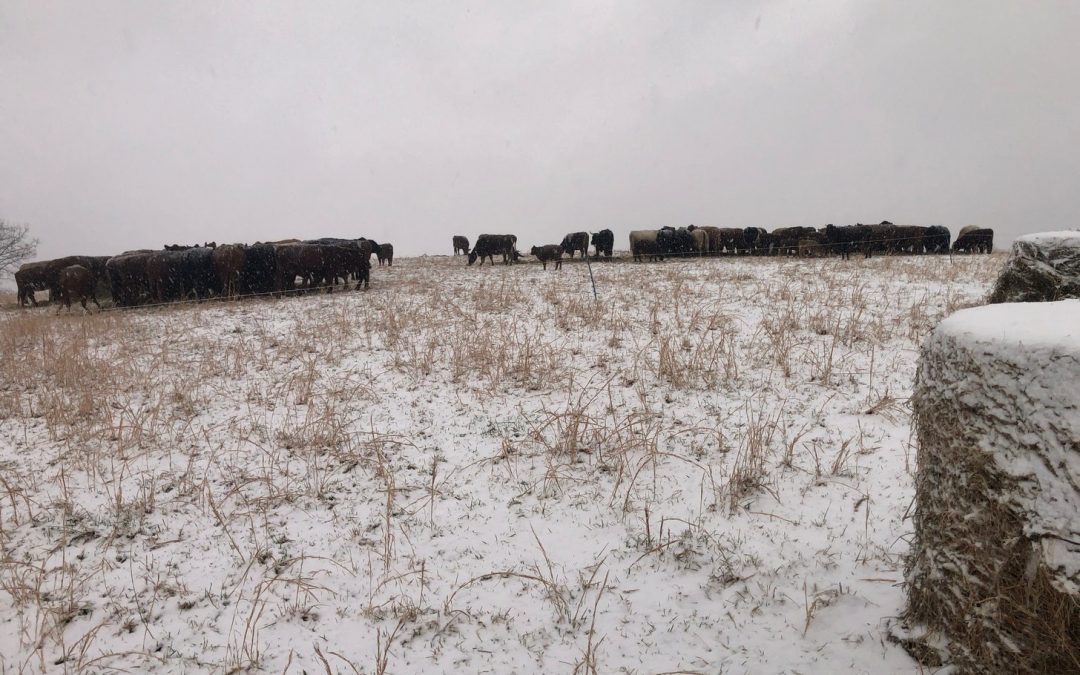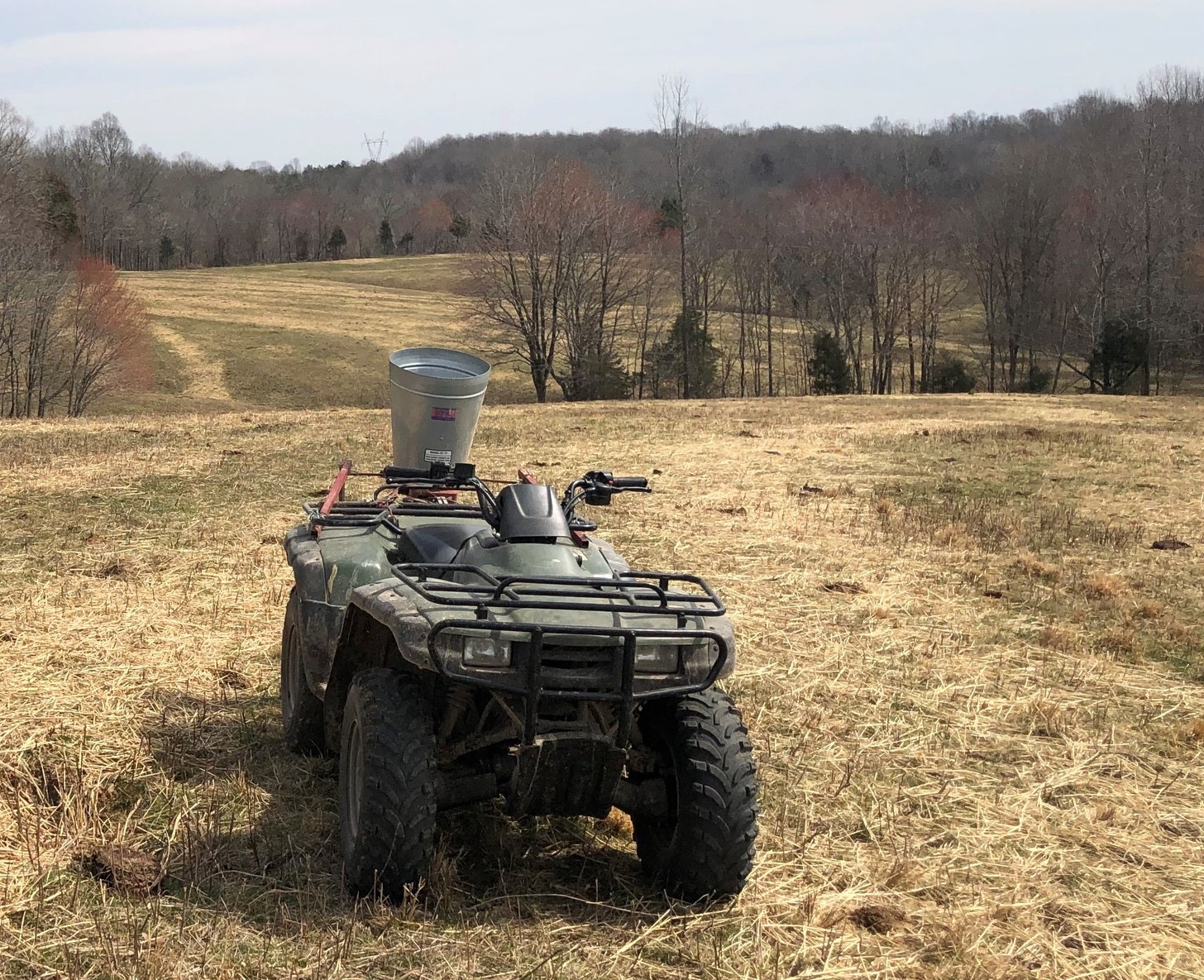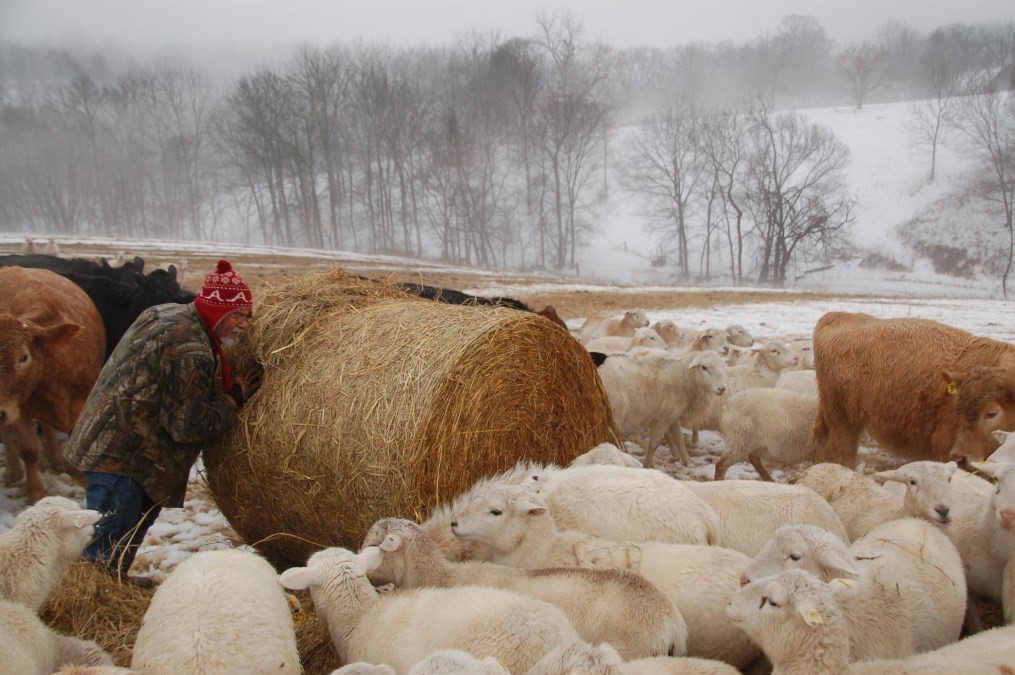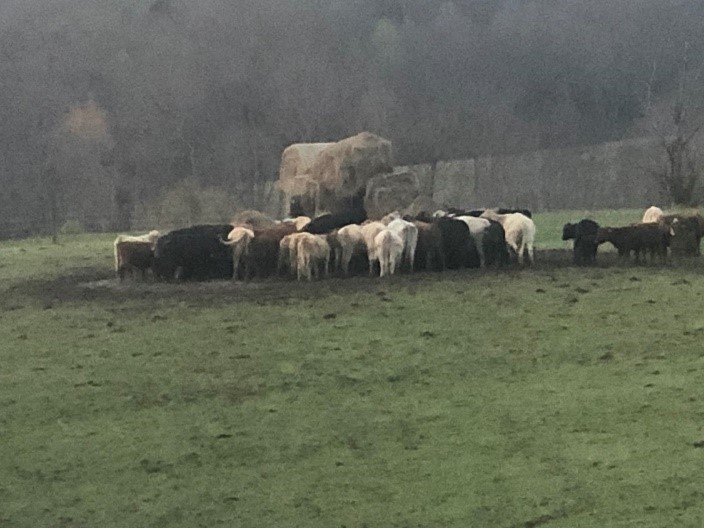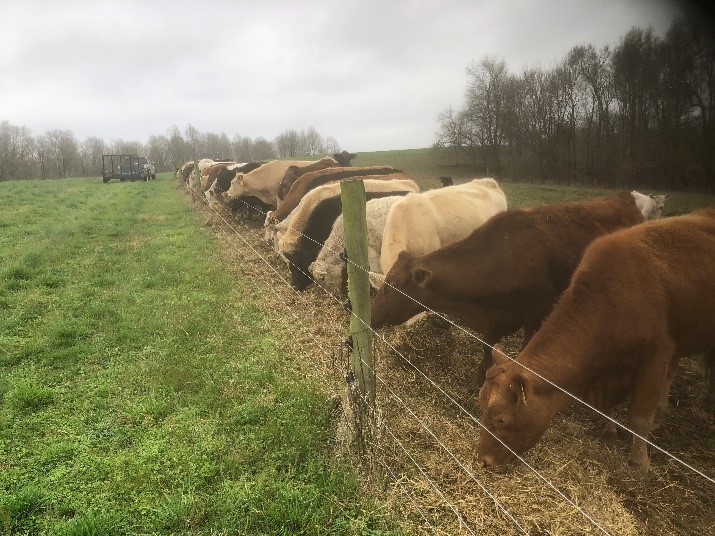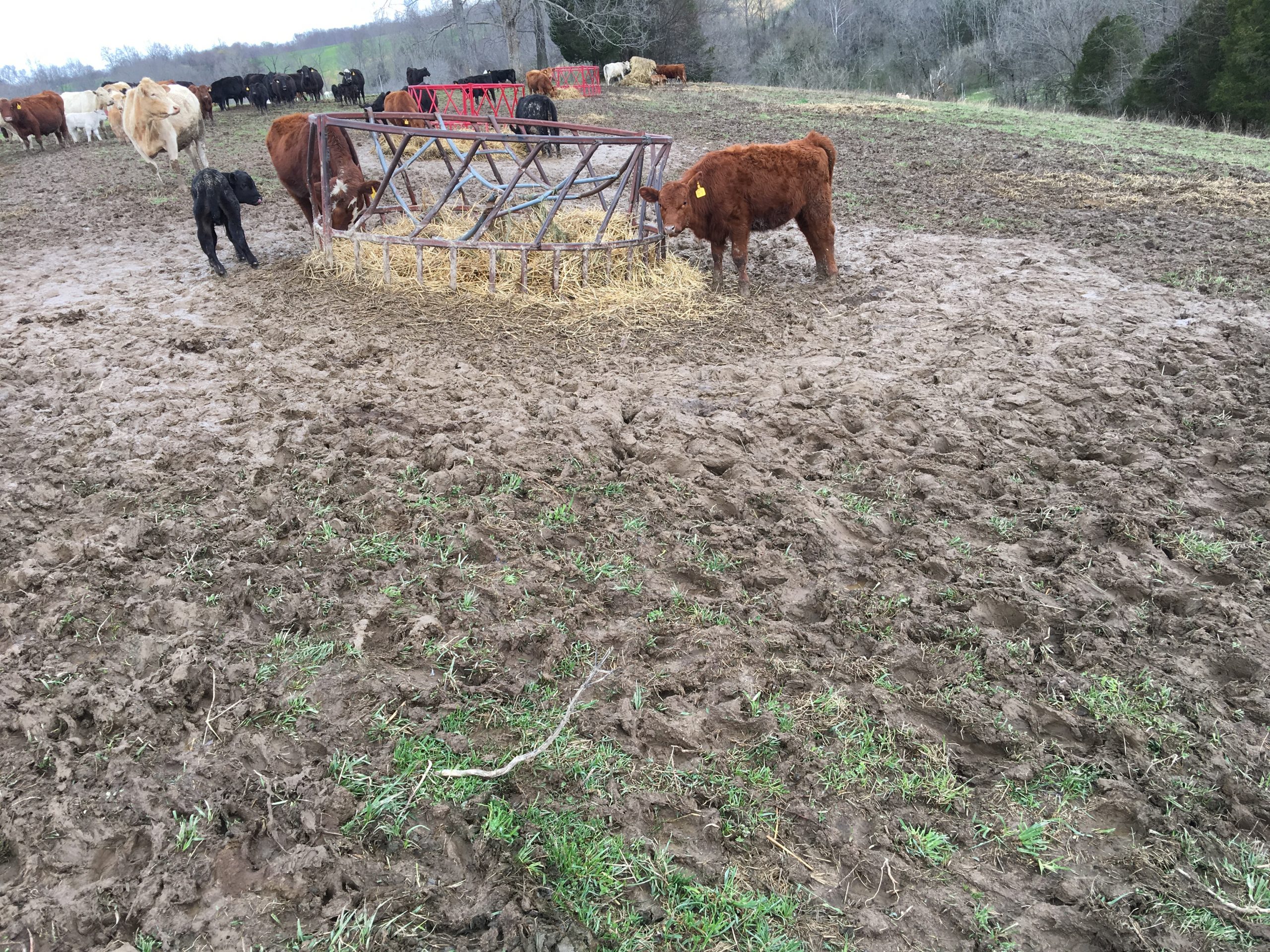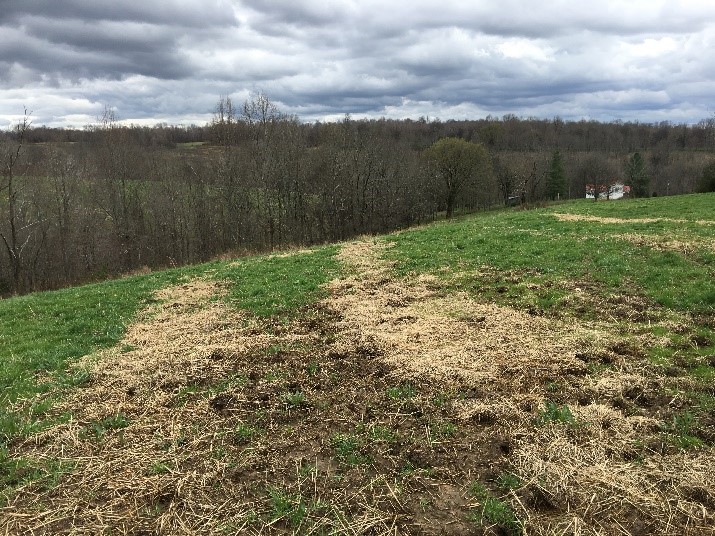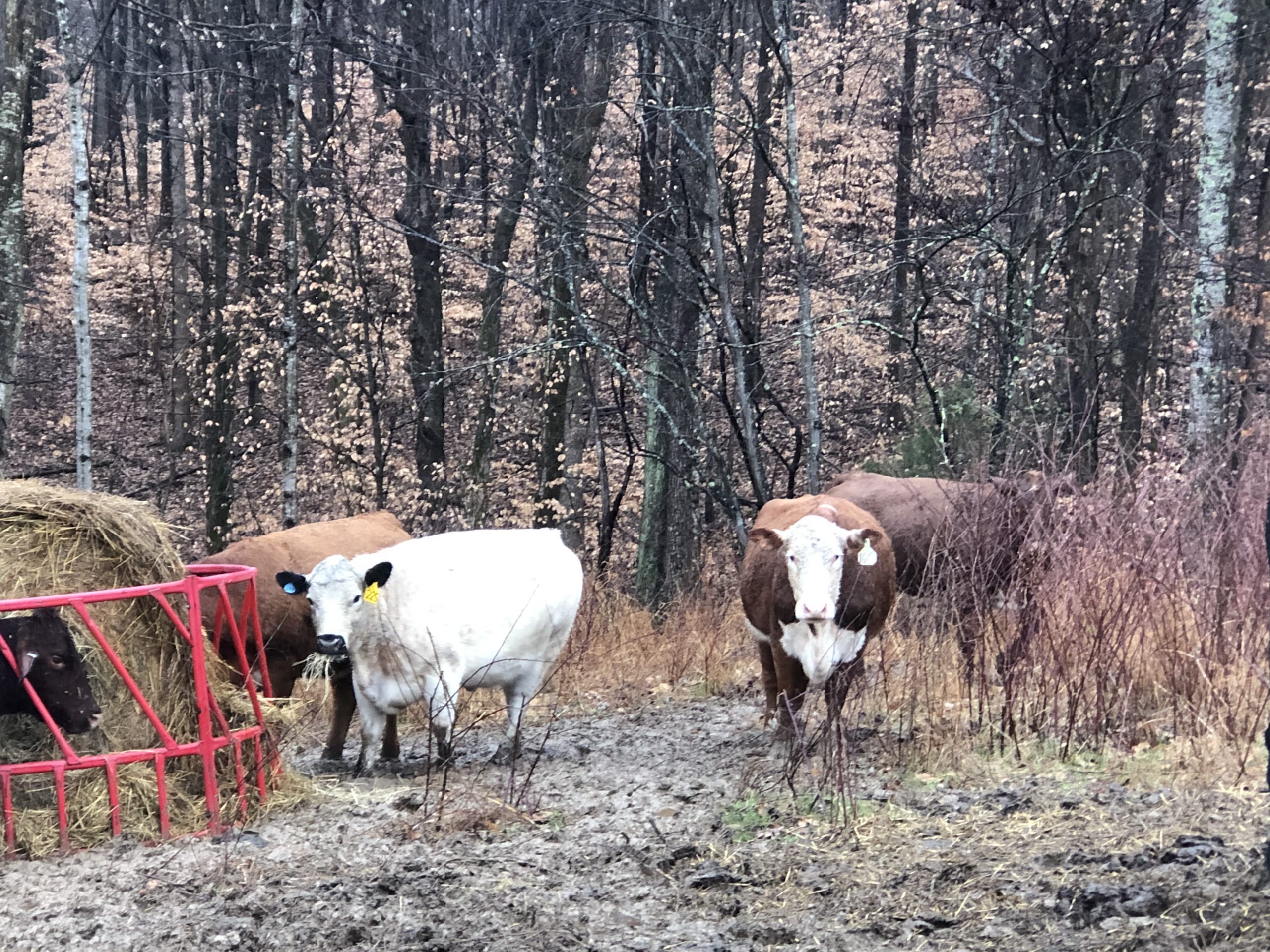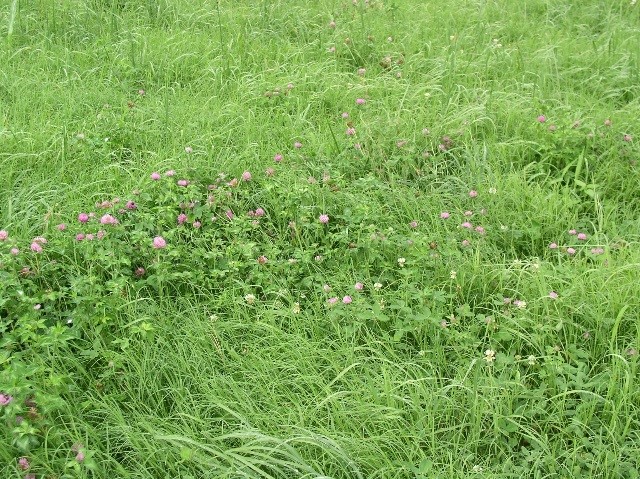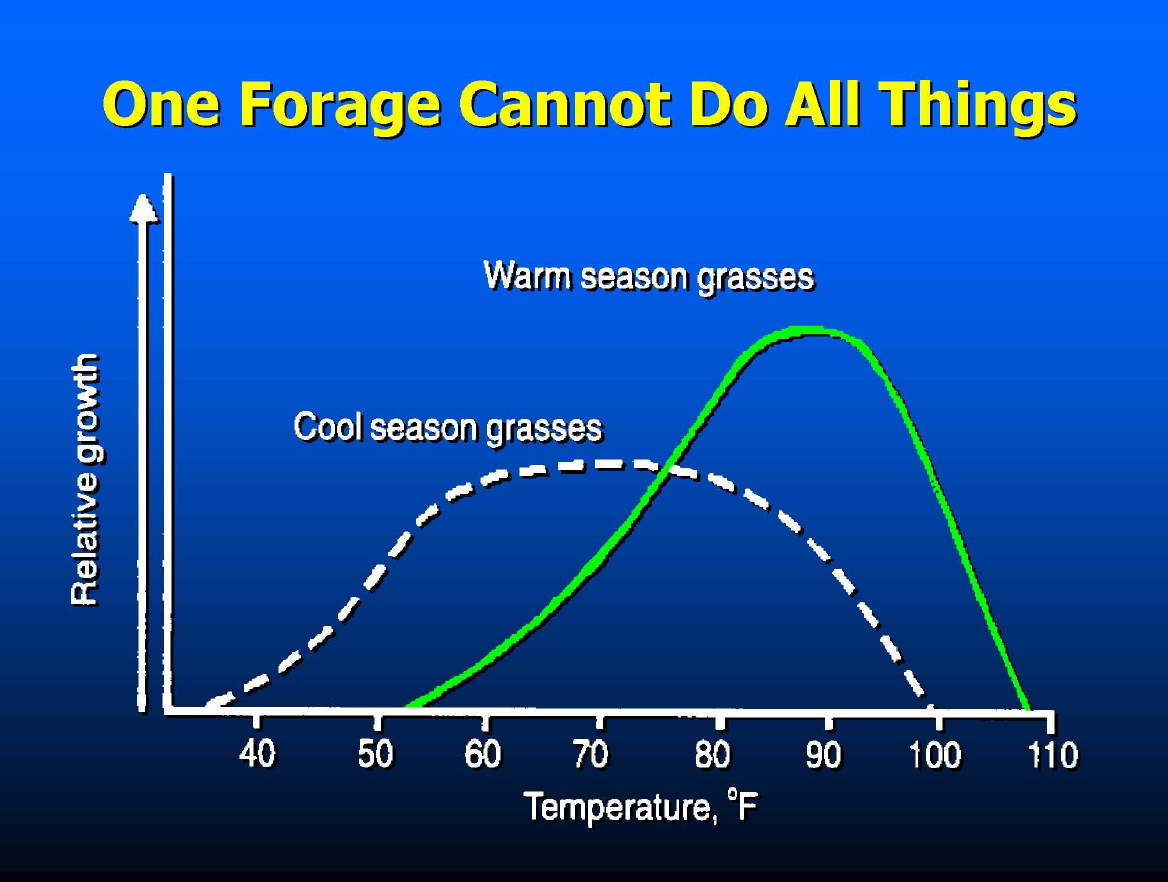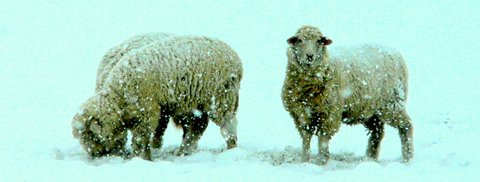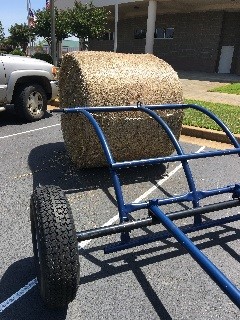Hay Feeding 101, 201, and 301
Here is where Debbie lets me nerd out about hay feeding. In this post, you’ll find tips for hay feeding in fall, winter, and Spring and why, if the conditions are right, I prefer to feed in the fall and stockpile my grass while it’s growing. I’ll also walk you through how to calculate your hay needs for the winter, but a warning is appropriate here, it’s not for the faint of heart! We’ll also delve into the different types of feeding options. So, let’s go.
The place to start when trying to calculate your hay needs is with plenty of numbers, but if you plan to guess or if you know your needs based on previous years, please feel free to scroll down to the different hay feeding techniques.
Bear with me on this because there are lots of numbers. Each time you do a calculation, ask yourself if this sounds reasonable.
– One animal unit (1,000-pound animal) consumes 30 pounds per day
– An acre inch of good grass weighs 300 pounds per acre inch
– Animals waste 50% of standing forage.
– Five sheep equals one animal unit
– Six goats equals one animal unit
Inventory the number of animals or animal units to feed grass or hay. Since I run multispecies, it’s easiest for me to convert everything to animal units. After the calf reaches 300 pounds, count the calf’s needs in addition to the cow’s needs. The default animal demand is 3% of their body weight. It will vary from 2% to over 3%, but there are losses, so I usually just use 3% for easy calculations. It’s just an estimate, anyway.
So, let’s do an example of round numbers for easy math: 10 cows (@ 1,000 pounds) with young calves and 20 ewes (@ 120 pounds), 12 nanny goats (@ 90 pounds), one bull (@ 2,000 pounds), one ram (@ 200 pounds) and one buck (@ 200 pounds).
Animal units
10 AU cattle, 2 AU sheep, and 2 AU goats plus 2 AU for the bull, .2 AU for a ram, and 0.2 AU for the buck. This brings the total animal units to 16.4; now multiply this by 1,000 pounds to get 16,400 pounds times 0.03 consumed per animal unit equals 492 pounds of grass needed per day, but let’s round up to 500 pounds just to be safe.
Inventory pastures and standing grass and estimated grazing days. Add up all the grazable acres of standing grass you have on the farm. An example would be inches across all fields: 4”, 6”, 8”, 10”, 5”, and 7”, equaling a total of 40”. For purposes of example, let’s assume all the fields are the same size, 5 acres per field for a total of 30 acres.
The average weight of dry grass per acre inch in a productive field with thick grass is 300 pounds. So 40” forage x 300 (pounds per acre inch) x 5 acres = 60,000 pounds of dry matter standing, but only 50% of this will be consumed by livestock due to stomping, laying, defecation, and urination on forage. So, really, we can only count on 30,000 pounds of actual dry matter consumed.
Now, to calculate how long this will last, divide by animal demand of 500 pounds of dry matter per day. Meaning the standing pasture will last 60 days. If the pasture didn’t grow anymore, we would be out of the grass in two months. This time of year, with moisture, grass will grow 20- 40 pounds per acre per day through October and will continue slower growth through early December. So, sixty days x 30 pounds per day x 30 acres = 54,000 pounds grown x 50 % loss = 27,000 pounds predicted to grow again divided by animal demand of 500 pounds per day = 54 additional days of grazing for a total of 114 days, so we predict grazing through mid-December.
Hay will be needed through March, so 3.5 months (let’s call it four months). So, 120 days x 500 pounds needed per day = 60,000 pounds of hay needed, but there are losses with hay, too, so let’s add 20% for losses from handling and feeding. That brings your hay needed to purchase to 72,000 pounds. Hay will keep in the barn with very little loss over time, so it is good insurance.
